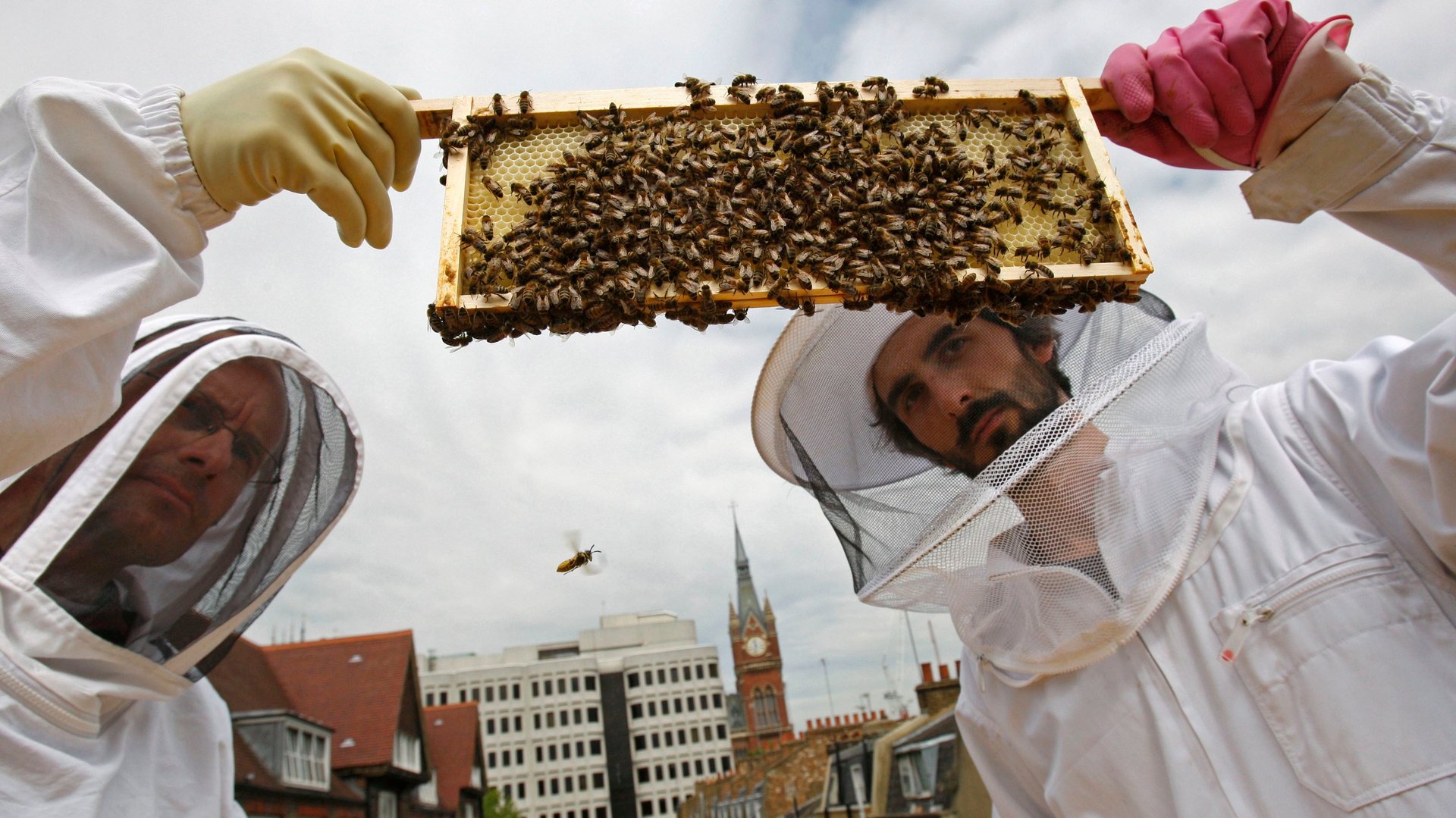Why the world’s bees are dying: They’re stressed out
Scientists have struggled for years to pinpoint the cause of the global crash in bee populations, an affliction known as Colony Collapse Disorder. Everything from pesticides to poor nutrition to automotive exhaust has been blamed for the apian apocalypse. But if British scientists are right, bees that pollinate much of the world’s crops are dying because they’re stressed out.


Scientists have struggled for years to pinpoint the cause of the global crash in bee populations, an affliction known as Colony Collapse Disorder. Everything from pesticides to poor nutrition to automotive exhaust has been blamed for the apian apocalypse. But if British scientists are right, bees that pollinate much of the world’s crops are dying because they’re stressed out.
A ground-breaking new study by researchers at the Royal Holloway University of London investigated the impact of non-lethal doses of agricultural pesticides on the social organization of bumble bee colonies. If correct, the findings go a long way to explaining why exposure to pesticides can prove fatal to beehives if not to individual bees.
“Social bee colonies depend on the efficient cooperative performance of multiple individual workers so that essential tasks like foraging, thermoregulation and brood care, sustain and enhance overall colony function,” they wrote. “They have many workers and are able to buffer some effects of stress. However, if too many bees become behaviorally impaired, irrespective of the reason, the colony reaches a tipping point and is set on a path to failure through moderate, but chronic, levels of stress.”
Over 42 days, the scientists fed eight bumblebee colonies neonicotinoids, a class of agricultural pesticide linked to bee deaths, in sub-lethal doses that bees would typically be exposed to as they collect pollen. Eight other colonies were fed non-contaminated pollen as a control. Researchers monitored the growth of the colonies, counting bee deaths and larvae hatching. They fed that data into an algorithm that predicted the impact on the colony’s growth of bees that became stressed.
After the first three weeks of the 42-day study, only control colonies continued growing, while treatment colonies began to shrink, according to the scientists. They concluded that the delayed decrease in colony size suggested that low pesticide exposure affected colony function rather than mortality.
In other words, as the pesticide stresses individual bees, they become sluggish and unable to perform their tasks in the beehive. As those bees turn into zombies, they affect healthy bees’ ability to do their jobs and keep the colony functioning.
While the scientists only tested the pesticide’s impact on bees, they noted that other factors—from poor nutrition due to a dearth of wildflowers to bad weather—could result in accumulated stress on individual bees that push a colony to collapse. “This can explain why finding the link between colony failures and a single specific stress factor has so far proved elusive,” they wrote.